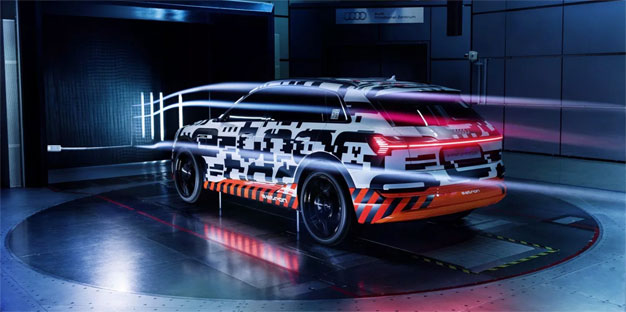Audi E-Tron Electric SUV Promises 250-Mile Range Thanks In Part To Fancy Aero Enhancements
Audi is working hard on electrification for its range of cars and SUVs. The automaker has talked up and shown off several e-
Audi has said that it is expecting the SUV to go for about 250 miles per charge. Audi claimed that it would have the best aero drag performance of an SUV back in 2015 at 0.25, which was then beat by Tesla and its Model X at 0.24. It was a scant amount to be sure, but enough to steal bragging rights from Audi.
The latest details about the car
Despite the SUV
Audi wrote, "To achieve the drag coefficient of 0.28, the Audi engineers developed a wide range of aerodynamics measures in all body areas. Some of these technical solutions are evident at first glance, while others fulfill their purpose hidden away from sight. Thanks to these solutions, the drag coefficient for the Audi e-
One of the tricks that Audi is using to get such good aerodynamic performance is something it calls virtual exterior mirrors. That bit of tech involves replacing the mirrors on the car with cameras that send images to OLED displays inside the car. That tech will be an option where it is legal. Audi also uses suspension that lowers the car at higher speeds and the ride has something called "controllable cool-air inlet."
Audi wrote, "The controllable cool-air inlet – a frame behind the Singleframe with two electrically operated louvers – also helps lower drag. When shut, the air in this area flows with virtually no swirl. As soon as the drivetrain components need cooling or the air conditioning condenser requires ventilation, the top louver opens first and then both louvers. When the hydraulic wheel brakes are subject to high loads, the controllable cool-air inlet opens and releases two ducts which channel the cooling air into the front wheel arches to the brakes."





